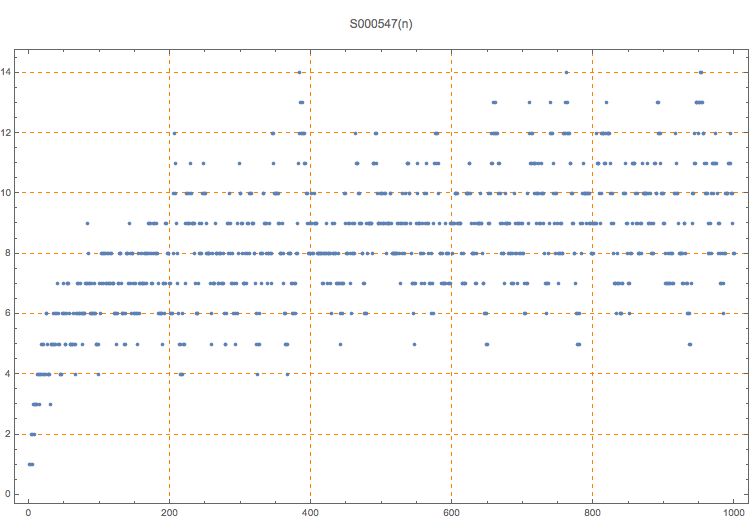Number of primes in the interval p to p + floor(log(p)^2), where p is prime(n).
1, 1, 2, 1, 2, 3, 3, 2, 3, 3, 3, 4, 4, 3, 4, 4, 5, 4, 5, 5, 4, 4, 4, 6, 6, 5, 4, 4, 4, 3, 5, 5, 5, 5, 6, 5, 6, 5, 6, 7, 6, 5, 5, 4, 4, 4, 6, 7, 6, 6, 5, 5, 6, 7, 7, 7, 6, 5, 5, 5, 5, 5, 6, 5, 4, 5, 6, 6, 7, 7, 6, 6, 7, 6, 6, 5, 6, 6, 6, 7, 7, 7, 9, 8, 7, 7, 6
1
There is at least one prime because p is counted. For terms after the fifth and up to 10^9, the smallest term is 3.
T. D. Noe, Plot of 1000 terms
T. D. Noe, Table of 1000 terms
Harald Cramer, On the order of magnitude of the difference between consecutive prime numbers, Acta Arith. 2, 23-46, 1936.
Eric W. Weisstein, MathWorld: Cramér Conjecture
(Mma) Table[p = Prime[n]; PrimePi[p + Floor[Log[p]^2]] - n + 1, {n, 100}]
Cf. S000548.
nonn
T. D. Noe, Mar 24 2015
